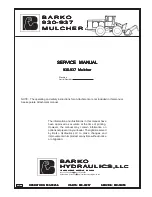
Safety instructions
12
Edition 02.19
qTOWER
3
84 / qTOWER
3
84 G
The electrical components must be checked regularly by a qualified electrician.
Any defects, such as loose connections, faulty or damaged cables, must be re-
paired without delay.
Do not replace the removable mains cable of the device by a mains cable that
does not meet the specifications (without protective ground conductor).
Before opening the device it must be switched off from the power switch and the
mains connector must be disconnected from the mains outlet!
The qTOWER³ 84 must be switched off immediately using the power switch and
the power supply disconnected from the mains if there is any interference with
the electric components.
The qTOWER³ 84 fulfills the corresponding requirements for interference emis-
sion and resistance from the IEC 61326 series. Assess the electromagnetic en-
vironment of the device before operation.
Do not operate the device near sources of strong electromagnetic radiation (e.g.
unshielded, deliberately operated high frequency source) as these may affect
proper operation of the device.
2.6.4
Handling of samples, auxiliary and operating materials
The operator is responsible for the selection of substances used in the process as well
as for their safe handling. This is particularly important for radioactive, pathogenic, infec-
tious, poisonous, corrosive or otherwise dangerous substances. For details contact the
safety officer responsible for your location. When handling dangerous substances local
safety codes and guidelines must be observed. The following general notes do not re-
place the specific local regulations or the regulations in the EC safety data sheets of the
manufacturers for the auxiliary and operating materials.
Observe the following:
The relevant regulations and the notes in the EC safety data sheets of the man-
ufacturers have to be observed and complied with regards to storage, handing,
use and disposal for all auxiliary and operation materials used during the opera-
tion of the device.
Auxiliary and operation materials may never be placed in containers or vessels
for food. The approved containers for the relevant material are to be used and















































